4 things foldable phones need to address before I buy into them
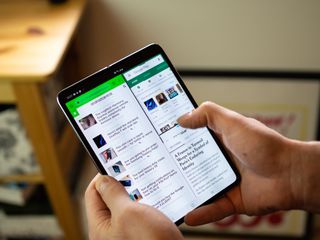
Last week, a few of my colleagues were lucky enough to get their hands on the Samsung Galaxy Fold — the very first foldable phone that's launching here in the U.S. in just a few short days.
Even though I'm watching from the sidelines, it's been really exciting to see their first impressions of the phone and learn what it's like to actually use a device of that form factor. This kind of stuff makes me absolutely giddy about consumer tech, but as mind-blowing and jaw-dropping as it is, I'm not quite ready to throw down my own money for a foldable — at least not right now.
Reliable durability
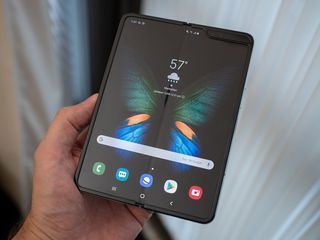
Just two days after journalists got their hands on the Galaxy Fold to begin their reviews, something happened. Numerous reports popped up (four, specifically) showcasing the Galaxy Fold's large tablet display being broken after around 48 hours of use.
The Galaxy Fold has what looks like a screen protector on that large display, and when removed, it makes the screen extremely vulnerable to permanent damage. In two of the incidents that popped up, the screen was broken as a result of this protective plastic being taken off. Samsung has since told us that final retail packaging will have a warning to alert customers that this plastic protector should not be removed under any circumstances, but if you ask me, that's just doing the bare minimum and sort of sweeping a design flaw under the rug.
By design, foldable phones are not durable devices.
My colleagues have said that the protector requires a lot more force to remove than your average screen protector, but the fact that it's still that easily removable by the end user is not good. Whether someone misses the warning, a kid gets ahold of the phone, or the film starts peeling up on its own after months of use, it's a crucial component of the phone that's readily prone to being tampered with.
Even more worrisome than this are the other two instances of the Galaxy Fold's display breaking. Samsung says it's currently investigating to see what went wrong, and in the case of The Verge's device, the OLED screen was killed as a result of some debris getting up under the screen. AC's Daniel Bader has said that his Fold's large screen readily accumulates dust throughout the day, so how long will it be before something like that happens to his Fold? Or for that matter, anyone else's?
Looking ahead to other foldable phones, such as the Huawei Mate X where its flexible display is exposed at all times, these issues with the Galaxy Fold have me seriously worried about how any first-gen foldable phone will be able to withstand regular use. So far, the results aren't promising in the slightest.
Be an expert in 5 minutes
Get the latest news from Android Central, your trusted companion in the world of Android
Software that makes use of the form factor
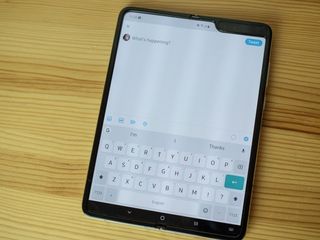
With a foldable phone, the idea is that you essentially have access to two devices in one — a smartphone and a tablet. That idea is really, really cool in theory, but the problem is that Android tablets have been kind of terrible for a while now.
To its credit, Samsung has created a couple of features to ensure that its software makes as much use of the Galaxy Fold's form factor as possible. If you're using a supported app, you can use something like Google Maps on the Fold's outer display, open it up to the tablet display, and be right where you left off on the smaller screen. Additionally, Samsung's Multi-Window feature enables you to run up to four apps at once on the Galaxy Fold's large screen. Not that you'd necessarily want to do this, but you have the option there if you're so inclined. That's awesome.
Foldables may live or die by software support.
Samsung's software tweaks are great, but for the Galaxy Fold and any other foldable phones that come down the pipeline, things are going to feel pretty awkward for a while as we wait for app developers to update their apps to be usable and pretty on a tablet-like screen.
There are a lot of reasons why Android tablets never caught on, and if you ask me, one of the main reasons was because developers just didn't support the form factor the way they should have. So many Android apps on tablets are just stretched out phone versions, lending no real benefit to having a large screen.
The excitement surrounding foldable phones could finally encourage devs to adopt their apps, but once the initial hype inevitably dies down, why should developers spend time and money on modifying their software to work on devices that a small fraction of the market is going to buy?
Less awkward designs

With foldable phones, we're getting devices that allow us to carry around small tablets in a much for portable form factor than previously imaginable. When you consider the fact that the Galaxy Fold gives you a 7-inch tablet which can be easily put in a pocket, it's seriously impressive we're at a point in time where something like that is feasibly possible.
However, in the process of doing this, we end up with some pretty awkward gadgets.
Foldables are designed around this idea of making a large screen more portable/manageable while on the go, but in this process, the phone aspect of these devices takes a backseat to accommodate this. When the Galaxy Fold is closed, it's essentially the same thickness as two Galaxy S10s stacked on top of one another with a super tall height and a tiny 4.6-inch screen. To say this is a compromised experience is an understatement. Even on phones like the Huawei Mate X where you have a much larger outer/phone display, it still ends up being unnaturally tall and big.
I think this is one of the first things OEMs will try to address with each new generation of the tech, but right now, I'm not sure what changes can be made to improve this side of things.
More reasonable pricing

And, of course, there's the matter of price.
I still have a hard time justifying $800 - $1000 for a new phone, so with these foldable devices selling for $2000 or more, they're only really accessible to people with a lot of disposable income.
The high prices are understandable right now considering how new this technology is, but if foldable phones are ever to become a mass market appeal, the cost needs to come down dramatically. This also lends itself to the software issue. If the prices are too high and people aren't buying these devices, it's further less of an incentive for developers to adopt their apps for the form factors. It ends up being a lose-lose situation.
We're still in the early days
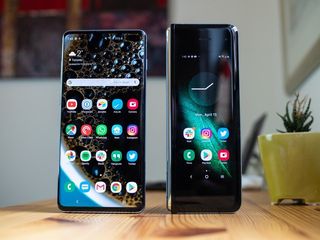
To play devil's advocate on myself, it's very much so worth addressing that we're in early days of foldable phones. A lot could change in a very short amount of time, so there's no telling where we'll be with foldable tech in a year's time.
I'm not ready to buy a foldable phone right now, but who knows how that'll change as 2019 goes on.
Some of the best non-folding phones you can buy

Samsung Galaxy S10+ (From $1000 at Samsung)
It may not be as fancy as the Galaxy Fold, but the Galaxy S10+ is one of the very best Android phones you can buy right now. Its AMOLED display is gorgeous, the three cameras are a ton of fun, and it doesn't cost two grand.
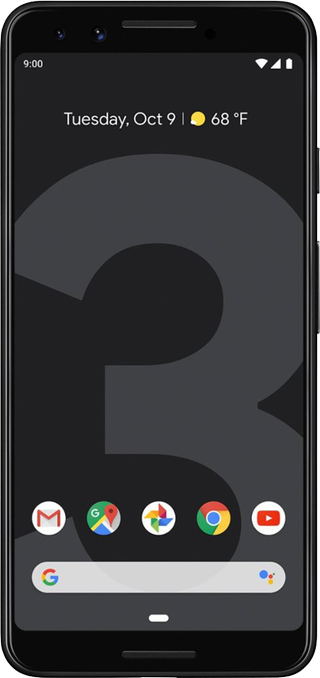
Google Pixel 3 ($799 at B&H)
If you want to take the best possible photos with your smartphone, you want the Google Pixel 3. Despite having one rear camera, this thing outputs truly spectacular photographs. It also has smooth software with timely updates!
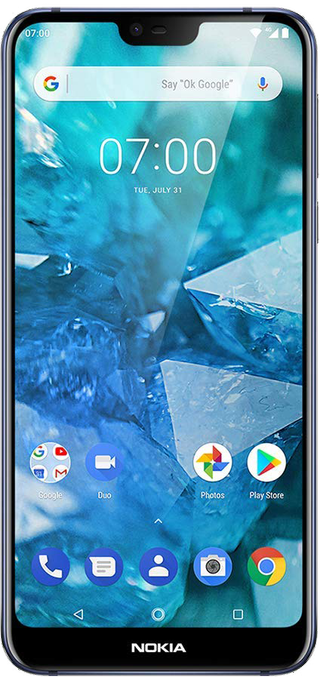
Nokia 7.1 ($349 at Amazon)
In the mid-range segment, it's hard to do better than the Nokia 7.1. This phone delivers a premium design, Android 9 Pie, fast updates, NFC payments, and excellent battery life for a fraction of "real" flagships.
`
Joe Maring was a Senior Editor for Android Central between 2017 and 2021. You can reach him on Twitter at @JoeMaring1.

